Feeding a Raw Diet FAQ
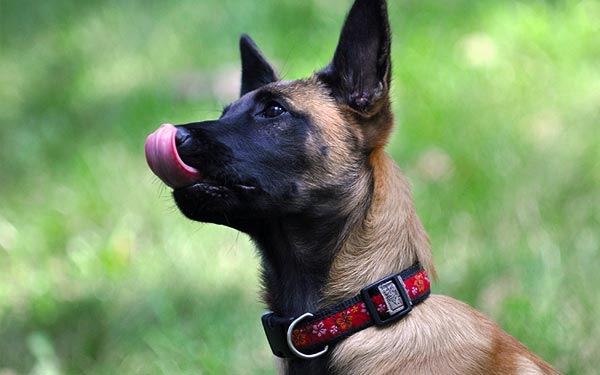
Disclaimer: I am not a vet or a health care professional. Feeding a raw species appropriate diet can be a controversial topic, and like any feeding regimen can have health risks associated with incorrect feeding and preparation. DO NOT FEED COOKED BONES, ever! Cooking bones changes the molecular structure, they become brittle and may splinter and injure or kill your dog! NO COOKED BONES.
Do your own research FIRST before diving into a new method of feeding your dog. Read as many books and articles as you can, talk to successful raw feeders and find a mentor, and use your own judgment and gut instinct. If you aren't comfortable with it, DON'T do it. Remember there are many ways to feed your dogs, with many variations. Just because I don't cover it here, doesn't mean it's wrong.
The ideas and opinions in this section of the website are my own, and come from feeding my dogs this way since 1994. I am constantly evolving, tweaking and changing my ideas as my knowledge and experience increases. Take any ideas I present here at your own risk and discretion.
I hope you and your dogs enjoy many healthy years together. Congratulations on making the first step towards one of the most important things you can do for your dog.
Cindy Rhodes
- I am interested in feeding the BARF diet, what do I do first?
- My vet told me my dog would get sick or DIE from feeding a raw diet? I am having second thoughts about switching.
- Why should I switch my dog to a raw diet?
- Is kibble actually bad for my dog? He seems really healthy.
- I want to breed my female. Is it ok to feed a raw diet to pregnant dogs?
- What about my new puppy? He was fed kibble at the breeder's place. How do I switch him? I don't want him to get sick.
- What is a RMB?
- What is a recreational bone?
- I have heard that you should NEVER feed your dog chicken bones! One of the foundations of your feeding program is chicken! Aren't you afraid your dogs will choke or the bones will splinter?
- I was told that if you feed dogs raw meat, they will become vicious and kill animals. Is this true?
- How do I make the switch?
- What should I expect at first?
- I have heard that raw is much more expensive than kibble, how much will it cost me to feed my dog this way?
- I read somewhere on the internet that feeding a raw diet reduces vet bills? How does that work?
- It seems too complicated to feed a raw diet, I don't have any free time to spend on this. How much time does it take each day to prepare the food?
- What do you feed your dogs? Can you send me some menu plans?
- How do I know each meal is balanced?
- How much do I feed?
- I'm not sure I am ready to switch to raw, but I don't want to feed kibble. Do you have any suggestions?
- I have small kids and I am worried about Salmonella and E-Coli!
- What about Grains? I read that you don't feed them to your dogs . Why not?
- What supplements do I need to use?
- How often do you use supplements? The label says to give it every day.
- What is ACV?
- What are probiotics?
- What are digestive enzymes?
- What about vegetables?
- What kinds of meat can I feed my dogs?
- Are there parasites in raw meat?
- I want to feed a raw diet but whole bones scare me! Can I grind them up before feeding?
- What kind of equipment do I need to grind RMBs?
- I see that some places sell pre-ground raw pet food. Are these ok to feed? They seem very expensive though!
- Can I buy RMBs at the grocery store? If not, where do I find them?
- What about feeding Raw and Kibble together, is that OK?
- I forgot to thaw out my dog's next meal, can I feed it frozen?
- I left my dog's raw food out of the fridge too long and it smells bad! Is it safe to feed it or should I throw it away?
- I just made the switch to raw and my dog won't eat! He sniffs the food and walks away. What should I do?
- My dog takes his chicken pieces and buries them under the couch cushions!
-
I am interested in feeding the BARF diet, what do I do first?
Let me start by saying I don't like the acronym BARF (which stands for Bones And Raw Food) I think it is an unpleasant term so I don't use it. I prefer the term raw diet so that's how I will refer to this method of feeding from here.
I recommend you start by reading a few books, they are available at the Leerburg bookstore. All the books sold about health and nutrition are good but beginners will especially benefit from Raw and Natural Nutrition for Dogs by Lew Olson, PhD and Raw Dog Food by Carina Beth McDonald. We give both of these books to our German Shepherd and Malinois puppy customers and rarely get questions about feeding a raw diet.
The internet is also a very good resource, with lots of Yahoo raw feeding and dog nutrition lists. It's a great way to read about other people's experiences, problems and successes with a raw diet. Be aware that there are also many ANTI-raw folks out there, so be prepared to wade through the controversy and make up your own mind.
We have a great deal of information on the Leerburg Discussion Forum. There are many posts on feeding raw foods, tips and questions from beginners and experienced raw feeders. You can register and post your own questions or just read through the existing information. Be prepared to spend some time reading, there's lots of material to sift through! You can also find health, training and health related topics discussed here.
Some people switch right away, but most take an average of weeks or months to take the plunge. Stay within your comfort zone, and do what you feel is best. It's your dog and your decision! Don't let anyone make you feel bad or wrong for taking your own sweet time.
-
My vet told me my dog would get sick or DIE from feeding a raw diet? I am having second thoughts about switching.
This is one of the most common emails I get from people researching a raw diet OR from our puppy customers after they take their pup in for a wellness exam. When I hear this, I tell folks to find a new vet! Whether you ever switch to a raw diet or not, when veterinarians use this type of scare tactic with NO basis in fact for it, I get upset.
Most vets have very little nutritional training, and what they get in school is funded by the pet food companies. Vets and their staff are also given kickbacks, free food for their own pets and other perks for pushing their products in their office. How do I know this? I worked in the veterinary field for over a decade and before I made the switch to 'real food' for my dogs, I was guilty of promoting Science Diet and Hills Prescription Diets right along with the vet. To all those dogs and cats from years past, please accept my apology! I just didn't know better.
Vets that don't understand the dietary needs of dogs (and cats) will recommend kibble or canned food, so that each meal is complete and balanced. They will tell you that your dog will get salmonella or e-coli from raw meat. AND BONES! They will tell you your dog will have his digestive system punctured and impacted from feeding bones. (Raw bones are the foundation of this diet, cooked bones are a big taboo! ) These myths just seem to keep on being passed around, with no hard evidence to back them up.
Truth be told , bacteria is everywhere (take a sample of kibble and have it analyzed sometime, you would be amazed!) Dogs eat poop, road kill and lick their behinds every day. Their system is different from ours. If we ate the stuff they did, WE would get sick. Dogs have a short digestive system made to handle raw meat and bones, the bacteria that is present isn't a problem for a healthy dog. Read the books I suggest in the first section, for more detailed information.
We balance the meals our dogs eat over a period of time, much like feeding your human family. Do you have a nutritional analysis printed out for each meal you feed yourself or your kids? I think not. ? Vets and dog food companies have convinced us all that we aren't 'smart enough' to feed our dogs without them making some mystery concoction out of grain and who knows what into little pellets we unquestioningly pour into our dog's bowl each day, year after year.
I am going to again emphasize that you never feed cooked bones, that includes steak bones and those smoked real bones they sell in pet supply catalogs. They splinter and can be dangerous. I get emails from people who say they have done this all their dogs life with no problems, and to them I say…”no problems, YET.” Why risk it?
-
Why should I switch my dog to a raw diet?
Raw whole foods are what are dogs are designed to eat. Raw foods are full of enzymes, protein, vitamins, minerals and essential fatty acids. Most raw feeders report healthier dogs, full of energy and vitality. There are less illnesses, clean white teeth and fresh breath. Visits to the vet for skin and ear infections and dental cleaning become a thing of the past. We see less year around shedding in our dogs, increased muscle tone and stamina and more mental and physical fitness. Just like us, dogs don't need all those artificial flavors, sugar and preservatives that many kibbles include in their ingredient list. Kibble fed dogs produce voluminous, incredibly smelly piles of waste... Raw fed dogs stools are small, compact and crumble up and disappear in a matter of days. The health benefits go on and on!
-
Is kibble actually bad for my dog? He seems really healthy.
The main ingredient in most kibble is grain, which is NOT an appropriate food for dogs. Dogs have no nutritional need for grain and it is the root of many allergy problems. Many commercial foods have artificial color, salt, sugar and flavoring added to get the dogs to eat them. Just like us, dogs can develop a taste for junk food. (which is what I consider most commercial dog food, JUNK FOOD) Kibble is cooked at a very high temperature to create the familiar little nugget we are used to seeing. Cooking destroys enzymes, essential fatty acids, vitamins and beneficial bacteria. Cooking breaks down the proteins and amino acids in meat and destroys most of the nutritional value that may have been present in the food in it's natural state. The processing kibble goes through makes all the dogs internal organs work harder to extract the nutrients that have survived the extruding process.
Dogs have teeth made for ripping and tearing meat, not chewing grains and veggies. Even the new generation grain free kibbles are highly processed and cooked at extreme temperatures. Species appropriate nutrition is the foundation of health for all living things, and kibble is not appropriate nutrition for a canine. Dogs can 'live' on poor quality food, just like it's possible for humans to 'live' on McDonalds happy meals. If you are reading this FAQ page, chances are you would like your dog to THRIVE, not just survive.
Feed your dog what his body needs to thrive instead of falling into the trap of believing the commercial pet food companies expensive advertising campaigns.
-
I want to breed my female. Is it okay to feed a raw diet to pregnant dogs?
Absolutely! Pregnancy and growth are 2 of the most physically taxing times in our dogs lives and feeding an easily digested diet can make the whole breeding, whelping and weaning process easier and more successful. Pregnant dogs have a need for extra carbs, which we provide to our breeding females in the form of pulverized vegetables. If you have the desire to breed your dogs, you owe it to them to do the research necessary to make the right food choices for the health of mom and pups! We carry books that outline the “ HOW-TO's” of feeding dogs a raw diet. These can be purchased at the Leerburg online book store.
-
What about my new puppy? He was fed kibble at the breeder's place. How do I switch him? I don't want him to get sick.
There are 2 schools of thought on this and I have done it both ways.
There is the gradual switch method, which changes the pup's diet a little bit each day until he is eating 100% raw. There is the cold turkey switch, which changes the pup all at once from the familiar diet, to the new food.
I feel that many times puppies do a bit better with a gradual switch, due to the stress involved with leaving the litter, travel and new environment. Keeping the diet familiar until the pup is settled in can make the transition easier for the puppy's immature digestive system. When the pup is eating, drinking and having normal bowel movements, then I suggest to start by adding a small amount of ground meat (without bones) to his regular food at each meal.
Don't overwhelm his system by trying too many different things at once, and I never add supplements to a pup's diet until the switch is complete and he is eating a variety of raw ingredients without digestive upsets of any kind. For more detailed information about ingredients for your pup's diet please check out the Leerburg bookstore. We carry many good books on raw feeding.
Our Leerburg and Kaiserhaus puppy customers receive educational materials and a transition diet print out to use when bringing their new pup home. We wean all our puppies from mom onto a raw diet, and strongly encourage our puppy customers to continue with a raw diet for the life of their dog.
-
What is a RMB?
RMB is an abbreviation for raw meaty bone. Raw meaty bones are soft enough for your dog to chew and eat completely. RMBs are the foundation of the raw diet. A few examples of RMBs are chicken wings, chicken backs, chicken necks, turkey necks, lamb necks, pork necks and oxtails. We use chicken leg quarters for many of our RMB meals. Many people say that small dogs can't handle leg quarters but our 11 pound Phoebe has no problem consuming them. We start our GSD and Malinois pups on leg quarters at 3 ½ to 4 months old although I am sure they are capable of handling them at an earlier age.
-
What is a recreational bone?
A recreational bone is a larger bone that your dog will chew but NOT completely consume. What may be a recreational bone for a Yorkie, may be a RMB for a Rottweiler. Some examples of recreational bones are cow femurs, knuckle bones and marrow bones.
I like recreational bones for puppies up to the age of about 6 or 7 months, but if the bones are left out and become dry they are like a cement block! I know many dogs that have permanently damaged or broken their teeth on recreational bones. Use discretion with this type of bone. Also be aware that when they dry out and drop they can have shards break off that could be potentially dangerous to your dog should they swallow them.
The last risk from recreational bones is damage to property and personal injury. I had a dog years ago that would sling her recreational bones around the living room. Glass coffee table, vases, and lamps become targets for this type of flying projectile. ? They also really hurt when you step on them when walking barefoot across your carpet…
-
I have heard that you should NEVER feed your dog chicken bones! One of the foundations of your feeding program is chicken! Aren't you afraid your dogs will choke or the bones will splinter?
This is the number one myth associated with raw feeding. If I had a dollar for every time I got an email or a question about chicken bones, I would be able to retire.
RAW chicken bones are wonderful food for dogs. They are soft, easy to chew and digest and readily available. NEVER ever feed cooked chicken bones (or any other cooked bones, for that matter)!
I suppose your dog could choke on chicken bones, but he can also choke on kibble or one of his toys. If your dog is a gulper (i.e. swallows chicken pieces whole) he may do better with larger portions, either a half or whole carcass as opposed to legs or wings.
There are risks present with every choice we make, so it's up to you to make the choices you can live with and feel comfortable with. Compare the risk with the benefits and make your own decisions.
-
I was told that if you feed dogs raw meat, they will become vicious and kill animals. Is this true?
Here is another myth. Chasing and killing animals is prey drive, a natural behavior seen in dogs no matter what their diet.
Dogs don't correlate the food we give them with live animals hopping around in the forest or on the farm, it just doesn't work that way. Our raw fed dogs have been taught not to chase our guinea hens and horses, and they are raw fed for the last 12 years plus. When friends bring their kibble fed dogs here to visit, they want to chase our livestock until taught not to… chasing, grabbing and sometimes killing animals is an instinct in dogs (and cats) and not correlated with the diet they are fed.
-
How do I make the switch?
I would recommend BEFORE you take the plunge that you have done adequate research, have your reference materials close at hand and you have purchased your ingredients to get going. It may help to keep a log or diary of meals at first, so you can go back and see what meals your dog likes or dislikes, which ingredients cause gas or diarrhea, etc. If you have a mentor, make sure you have his or her email address handy in case you have questions.
I would also recommend having your dog given a thorough physical by your health care professional before you switch. Some folks run a blood profile. I don't think it's necessary in most cases but it doesn't hurt. Be aware that if your vet is not PRO raw, he or she may try to derail you. I would suggest that you find a raw friendly vet before making the switch, if it's at all possible.
There are two ways to switch with the first being cold turkey. This method seems to work best for healthy adult dogs. You can fast them for a day or so if you wish before you switch, but the way I would recommend is to throw away your kibble, and start feeding raw. It's that simple! Keep everything very simple for the first few weeks, I would suggest chicken necks/backs ONLY for the first 3 or 4 days. Make sure the dog is digesting everything properly (no diarrhea or vomiting) before you add another type of food to the meals. Hold off on all supplements for several weeks. I would also wait several weeks before adding richer foods like liver, eggs or canned mackerel.
The second method is the gradual switch. Basically you add a bit of raw food to the dog's meals each day, in increasing amounts while decreasing the kibble. This may work for some dogs, but in my experience (and I have been feeding a raw diet since 1994) it takes longer for the dog to adjust and there are more frequent bouts of loose stools. I would recommend cold turkey for most adult dogs and some puppies.
If you decide you will be feeding veggies, wait until the dog is eating a variety of RMBS and different meats before you add them to the diet. We use them occasionally and I personally don't think they are necessary but some dogs seem to do well with the additional fiber. Remember, veggies need to be thoroughly cooked or pulped in order for dogs to digest them at all.
-
What should I expect at first?
Good question! The answer is varied. Some dogs switch without a problem and eat with gusto. Other dogs love the food but may have some digestive upsets for a short period of time while their system adjusts to real food.
Then there are the dogs that won't eat a raw diet. In many cases I think these are dogs that have been fed a variety of flavored treats, and processed foods. Raw food has little odor compared to many of the commercial pet foods out there, and I think that some dogs are addicted to the flavorings and additives. Many times there is a lot of owner anxiety over switching to the raw diet and the dog picks up on that.
For the dogs that won't eat 'real' food, you may need to use your imagination at first. Sprinkling parmesan cheese or lightly browning (LIGHTLY) some hamburger may get the dog eating. In some cases I think the dog just doesn't know a piece of raw chicken is food! You may need to be a bit of a cheerleader at first but once they get the hang of it, most dogs thoroughly enjoy their raw meals. I have reports from owners whose dogs are actually excited about eating for the first time in their lives once switched to raw.
A healthy dog won't starve to death, so you may have to just allow the dog to skip a meal here or there until they get hungry enough to try it.
Of course, if you have any doubts about your dog's health, please consult with your health care professional!
-
I have heard that raw is much more expensive than kibble, how much will it cost me to feed my dog this way?
Raw can be expensive BUT so can kibble. In my experience, it probably costs about the same in the long run. If you buy your dog's meat from the prime meat case at the grocery store, it may get expensive in a hurry! Pre-ground and prepackaged raw diets can be very costly also.
I have learned to be a bargain shopper. Wal Mart and small grocery stores can be a great place to stock up on chicken leg quarters and canned mackerel and sardines. I made a deal with a local rabbit farmer to save me all the trimmings when he butchers rabbits. I order chicken back/necks and pork hearts in bulk from a local restaurant supply. Our local family owned grocery has marked down meat almost every day and runs great specials on chicken and ground beef. Friends that hunt give me their freezer burned venison from last years hunt.
Buy in bulk when you can and repackage into more manageable containers. We are feeding a lot of dogs every day so we thaw out 20-40 pounds of meat every day. you may only need a pound or two for each day so your packaging will differ from ours.
There are lists on the internet that only deal with suppliers for raw feeders. This is a great resource for finding co-ops and suppliers in your area. It's much easier now to feed raw than when I started back in 1994, there are so many more options.
-
I read somewhere on the internet that feeding a raw diet reduces vet bills? How does that work?
The main way our vet bills have been reduced is by virtually eliminating the need to take our dogs for skin and ear conditions, chronic illness management (i.e. pancreatitis, colitis) or dental cleanings.
Injuries, hip evaluation radiographs and occasional blood work for health screening are the occasions for a visit to our vet these days. Our dogs are healthier, and our vet bills stay down! How cool is that?
-
It seems too complicated to feed a raw diet, I don't have any free time to spend on this. How much time does it take each day to prepare the food?
This is a commonly asked question. It takes as long as you want it to! Here at Leerburg we are feeding between 15 and 25 dogs every day. We prepare all their food at the same time. Each dog gets a different amount with different supplements which we have typed out on a daily roster for food prep. Total time for measuring, placing in bowls, adding supplements and clean up is 15 to 20 minutes. That's about 1-2 minute per dog, per day for food prep. Some of our dogs are fed twice daily and their evening meal is made up in the morning, with the regular daily food and refrigerated until evening.
Once you get the hang of it, it's just as fast as feeding kibble (and way more fun).
-
What do you feed your dogs? Can you send me some menu plans?
We feed our dogs a variety of items. They get chicken, turkey, pork, beef, lamb, fish, rabbit, goat, duck, venison, bison, tripe, liver, eggs, and occasionally leftovers from our plates!
There are excellent guidelines for meal plans in several books at the Leerburg bookstore.
-
How do I know each meal is balanced?
You don't! Don't worry about balancing every meal, it's just not necessary. Feed a variety of fresh ingredients each day and aim to balance the diet over time, not each and every day. Rotate your ingredients over a period of 3 weeks and you will achieve BALANCE OVER TIME. Your own meals aren't balanced every day, are they?
-
How much do I feed?
The rule of thumb for healthy adult dogs is 2-3% of their optimal body weight. If they are overweight, aim for the DESIRED weight, not their current weight. Same for an underweight dog, take their desired weight to figure your starting amount for each meal.
- Take your dog's weight (or desired weight) and multiply x 16. This will give you your dog's weight in ounces.
- Multiply his weight in ounces x .02 (or .03 for 3%)
Example: My Malinois Raine weighs 62 pounds. That's 992 ounces (62 x 16). I multiply her weight in ounces times 3% to get the feeding amount of 29.76 ounces. (992 x .03). I round it off to 30 ounces of food per day for Raine, or approximately 1.9 pounds.
Chances are that some days I will feed Raine 2 pounds per day, and some days 1 3/4. I don't typically use a scale for my own dogs these days, I am pretty good at eyeballing the amount needed.
This will give you a starting point for determining the amount to feed your dog each day. If he seems thin, increase food daily. If he seems chunky, decrease. This is where your journal or diary comes in handy, if you are the kind of person that likes to keep track of this sort of thing. I just wing it most days. Be aware that you should be constantly monitoring your dog's condition and activity to adjust your feeding.
Puppies eat anywhere from 5-10% of their body weight daily while they are growing. It's important to keep young dogs lean and not overfeed them. I like to see a hint of rib, but not too much. Skeletal development is something that can be compromised by putting too much weight on soft, still developing puppy bones. Be vigilant about your pup's body condition and adjust your feeding accordingly.
-
I'm not sure I am ready to switch to raw but I don't want to feed kibble. Do you have any suggestions?
I would recommend a dehydrated raw food called Honest Kitchen that we have been carrying here at Leerburg since October 2005. We have heard great things from our customers who use this product, and have had good results using it in conjunction with our homemade raw diet with our dogs here at Leerburg/Kaiserhaus.
It's convenient, the dogs love it and it's the next best thing to a raw diet! We use this food exclusively for traveling with our dogs.
It's a good choice for boarding your dogs too, as many facilities don't have freezer space for your dog's raw meals while you are on vacation.
-
I have small kids and I am worried about Salmonella and E-Coli!
Bacteria is EVERYWHERE, on your counters, in your fridge, your sink and if you feed kibble, ON THE KIBBLE too.
Whether you have kids or not, I would be aware of the health hazard that MAY be present when handling any raw food product. Don't be overly worried or fanatical about this, just be aware and sensible.
If you use the same safe food handling practices with your dog's food, that you do with your own, then you should be fine. Clean all surfaces with antibacterial cleaners, wash your hands frequently and clean all dishes and utensils with hot water and soap or run them through the dishwasher. We use rubber gloves when handling the cases of meat for our dogs, and buy the disposable latex exam type gloves specifically for this purpose.
If you worry about where to feed your dog with kids around, I suggest a crate that can be easily wiped out with antibacterial cleaner. Some people put a plastic table cloth or shower curtain on the floor for their dogs to eat on and others only feed their dogs outside. You should do whatever works for you and your situation.
Some folks even wash their dogs face off after they eat, just to be safe. I am not saying I agree or disagree with these practices, just giving you some options and things to think about.
-
What about grains? I read that you don't feed them to your dogs . Why not?
I don't feed grains for a couple reasons. Dogs have no nutritional need for grains of any kind and they are terribly hard for dogs to digest. Grain is also one of the main offenders in allergy problems in dogs. Those 2 reasons alone are good enough for me to not include grain in my dogs diets.
Some people feed them with good results. Some dogs seem to do well with a little grain added to their diet occasionally. If you feed them and your dog has gunky ears or itchy skin, try removing them completely from the diet. (this includes dog biscuits and treats too) You may be surprised that your dog improves a lot and I have gotten emails from folks whose dogs have been “cured” of allergies by simply taking grain out of the diet.
Food for thought and something most vets won't even suggest.
-
What supplements do I need to use?
The honest answer is that I don't know that you NEED to use any supplements if you are feeding a species appropriate diet that is balanced over time. However, many of us raw feeders feel that there are nutritional 'gaps' in our feeding regimen so we add supplements to help round out our dog's diet.
There are 2 supplements that I use regularly. They are salmon oil and vitamin E soft gels.
I use probiotics occasionally, during times of stress, travel, diet change or when I get a new pup. Probiotics are helpful for restoring the friendly bacteria in the intestinal tract after antibiotic therapy or illness.
Some folks add Kelp and Alfalfa and powdered Vitamin C to their dog's raw meals.
Digestive enzymes are good for dogs new to a raw diet, in some cases.
There are many different schools of thought on supplements and my views are constantly changing.
You can see a list of supplements we carry on this healthcare page.
For more information on what each supplement does and how it should be used I recommend visiting the Leerburg online bookstore and checking out our books. Many of the raw feeding books we carry go into scientific detail about what each food and supplement provides the body.
-
How often do you use supplements? The label says to give it every day.
I give supplements to my personal dogs 3-5 days a week. I don't have a rhyme or reason for that, it's just how it works out most of the time. Leerburg's breeding dogs get their supplements every day, which vary from dog to dog according to age, condition and breeding status.
-
What is ACV?
ACV=apple cider vinegar
Some folks add ACV to their dog's food to aid digestion, help the body fight toxins and unfriendly bacteria. I have used it to wipe out one of my dog's ears in the past when she had some inflammation, it seemed to have a cooling effect. Some people use it as a rinse after they bathe their dogs, to combat itchiness.
I don't have a lot of personal experience with using it, but many people swear by it. You can google Apple Cider Vinegar and come up with lots of information.
-
What are probiotics?
Probiotics are beneficial bacteria that live in the healthy intestinal tract. They keep bad bacteria and fungi from upsetting the natural balance. Using probiotics can help restore normal gut function after stress, surgery, diet change or antibiotic use. We also use this at Leerburg when weaning litters onto solid food.
We carry a powdered probiotic that is added to your dog's meals.
-
What are digestive enzymes?
Digestive enzymes help the body break down food so the body can assimilate the nutrients. Enzymes are present in raw food, but cooked food has an absence of enzymes. The body must use it's own limited enzymes to break down cooked food and the body's enzyme producing organs are worked overtime to help digest the food.
Enzyme supplements are commonly used by dogs that have compromised ability to digest food, either from a digestive disorder or disease like EPI (exocrine pancreatic insufficiency).
-
What about vegetables?
There are 2 camps of raw feeders, the veggie feeders and the NON veggie feeders. I find myself somewhere in between.
I don't feel that my dogs need the veggies, but sometime they enjoy left over steamed green beans or broccoli from our family meals. Vegetables need to be broken down by cooking or pulverizing for dogs to be able to access any of the nutrition and since cooking destroys the enzymes, the best way to serve veggies is raw and pulped or pulverized in a food processor.
Pulping veggies is a lot of work in my book, so I don't do it anymore. I used to spend one afternoon every few weeks using my food processor on veggies and freezing them in Tupperware containers. Some people make a veggie 'glop' of pulped veggies, liver and other stuff they want their dogs to eat.
Veggies can be good fiber for dogs that tend to get constipated or overweight dogs that would benefit from fewer calories. Veggies can add a bit of bulk to the meal so the dieter doesn't feel so deprived.
When I cut the veggies out of my dogs diet the only difference I noticed was the LACK of occasional dog 'gas'. That's a positive reason to not feed veggies around here, we have five house dogs.
-
What kinds of meat can I feed my dogs?
Depending on your location you will have access to different local meat sources. We feed beef, lamb, chicken, turkey, pork, goat, buffalo, venison, elk, fish, rabbit.
Some folks feed moose, bear, ostrich or kangaroo.
Variety is the key to a successful raw diet.
-
Are there parasites in raw meat?
I would say the meat purchased as “fit for human consumption' should be safe from parasites. I would not feed my dogs anything that wasn't fit for human consumption anyway!
Some raw feeders won't feed pork because of the possibility of trichinosis, but if the meat is inspected I don't worry about it.
I don't know if I would feed a wild pig to my dogs or certain wild game like bear or beaver. We do feed wild venison without issue.
It's said if you freeze meat at zero degrees for 3 weeks it will kill parasites but I don't have personal experience with that, so take that into consideration when selecting meat for your dogs.
Note from one of our customers:
I only have one comment, I would not feed my dog bear meat. The reason is Trichonella. This is quite common in bear meat, especially raw bear meat. There are quite a few cases of trichinosis in people each year in the USA, and they are almost always from bear meat. I wouldn't trust freezing to take care of this parasite. It is a nasty and painful infection. I had been feeding my dog deer meat, but the advent of the wasting disease has made me leery of using it for myself or my dog. We will get any deer I shoot this year checked before I or my dog eat it. I switched my dog (Labrador Retriever) to Raw Food after buying the books and videos, and reading the articles on the Leerburg site. As always a good source of sound advice.
-
I want to feed a raw diet but whole bones scare me! Can I grind them up before feeding?
You can certainly grind them, but it's a lot of work for you and the dog will miss the physical exercise of ripping, crunching and chewing his meals. Several of our older dogs have worn their teeth down over years of bite work and carrying around toys, so ground RMBs may be an option for them at some point. So far, all my dogs can still handle a chicken leg quarter, even without perfect teeth.
Unless there is an underlying medical or physical reason for grinding for your dog, I would recommend feeding RMBs whole.
-
What kind of equipment do I need to grind RMBs?
I believe most raw feeders that choose to grind like the Maverick Grinder or the Northern Tools grinder. A Google search on either of those should take you to places to purchase them. I don't endorse OR have experience with either of them, but belong to several raw feeding email groups with people who get good results with these models.
-
I see that some places sell pre-ground raw pet food. Are these ok to feed? They seem very expensive though!
I think pre-ground is OK to feed occasionally, although once again your dog will miss the whole 'chew up the RMB' experience. It's expensive as a rule, sometimes 3 to 10 times more expensive than doing it yourself and I am not sure I really believe the ingredient list. I am a skeptic and how do I know that what they label as buffalo and veggies is really buffalo and veggies? Maybe it's some road kill or mystery meat? I like seeing the ingredients that go into my dog's meals and when you buy a ground item, you have to take their word for it.
I AM guilty of buying ground RMBs for my cats, from a raw feeder supply that delivers to my home. (Did I mention we feed our 4 cats a raw diet also?)
-
Can I buy RMBs at the grocery store? If not, where do I find them?
You may be able to buy some items at the grocery store. Leg quarters and wings are usually easy to find at the store.
I would check your local yellow pages and look for restaurant meat suppliers, or search the internet for raw feeding co-ops in your area.
We buy from a restaurant supply but due to high gas prices we have a 10 case minimum order, which is 400 pounds. Unless you have a lot of freezer space or some friends to split orders with this may not work for you.
-
What about feeding Raw and Kibble together, is that OK?
Many people want to do this! I guess I don't understand why you wouldn't just ditch the kibble once and for all? It's like eating a healthy meal and then having a Big Mac or box of Hostess Twinkies along with it. Get the junk food out of your dog's diet and watch him thrive!
I personally don't feel combining raw and kibble is OK and many dogs have digestive upsets when RMBs and kibble are mixed together.
If you absolutely MUST do this, at least feed raw for one meal and kibble for the other. I feel that it's easier on the dog that way.
Switch your dog to Honest Kitchen Dehydrated Raw Food and continue your education about raw feeding in the meantime.
-
I forgot to thaw out my dog's next meal, can I feed it frozen?
I would try to gently thaw it by running some cool water over it a bit but I have fed frozen food many times. Some people say you CAN'T feed frozen RMBs, but my logic is that if my dog found a frozen squirrel out in the woods he would carry it home and gnaw on that squirrel-sicle until it was eaten. I am not sure it's great for their teeth to eat frozen solid hard food on a regular basis but I have done it many times without incident.
Do not thaw your dog's food in the microwave! It will start to cook and change the structure of the bones and damage the enzymes in the meat.
If you can't bring yourself to feed frozen food, then keep a couple cans of mackerel on hand and feed those instead or better yet, order a bucket of Honest Kitchen dehydrated as your backup food.
-
I left my dog's raw food out of the fridge too long and it smells bad! Is it safe to feed it or should I throw it away?
My dogs don't have problems eating some pretty ripe stuff. I am not sure I would feed spoiled meat to my dogs but if it's a bit stinky and 'off' I will still let the dogs munch on it. The riper, the better in their book!
I would not feed even slightly gamy or nasty smelling meat to a pup or dog with a medical issue or compromised immune system.
If you worry about things like that then just throw it away. No sense taking chances!
-
I just made the switch to raw and my dog won't eat! He sniffs the food and walks away. What should I do?
This is a common issue with dogs that have been fed a processed food for an extended period of time. Many times the dog isn't sure it's food, as raw food has little odor compared to kibble with it's added flavors. Some kibble even has stinky fat sprayed on to entice dogs to eat it.
Like us, dogs can become addicted to 'junk food' and you will have to be very patient with these dogs. Sometimes it involves LIGHTLY browning the outside of the meat you are offering, or adding a little bit of parmesan cheese or garlic salt. Do NOT cook anything that contains bones!
Many of these dogs do best starting with raw burger, instead of chicken parts. Once they are eating the burger well, then try adding other types of food. Sometimes dogs prefer a completely ground up meal (bones and all) at first. I don't recommend staying with ground RMBs but whatever it takes to make the switch is worth trying.
Whatever you do, don't give in too quick! Many folks will try feeding raw for a day or two and then go back to kibble. Tough love is what is needed in some cases! If you are unsure about your dog's health, then see a vet before you change the diet especially an older dog or dog with a pre-existing health problem.
-
My dog takes his chicken pieces and buries them under the couch cushions!
Sometimes this means you are overfeeding your dog. He is saving the extra for later. We notice that our pregnant females do this sometimes (not under the couch cushions), they hide an extra chicken leg quarter under their blanket or in the corner of the whelping box.
Some dogs just like to eat on their own schedule. I have taught my dogs to eat when the food is presented or lose it. For house training this is very important and also for dogs being trained on a regular basis. I manipulate my dog's hunger to my benefit for a reward system in tracking and obedience.
I personally don't like the idea of a raw chunk of meat being stashed somewhere in my house. My dogs are fed in their crates and if they chose not to eat right away (in the first 15 minutes or so after I put the food down) then I take it away until next feeding time. They learn in a hurry to eat when they have the chance.
There are several more questions concerning feeding a raw diet that have been answered on Leerburg's Ask Cindy section. You can view these Q&A's to troubleshoot any problems you come across with the raw food diet from our search page.



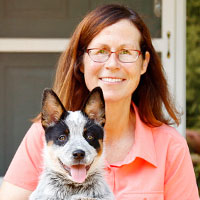
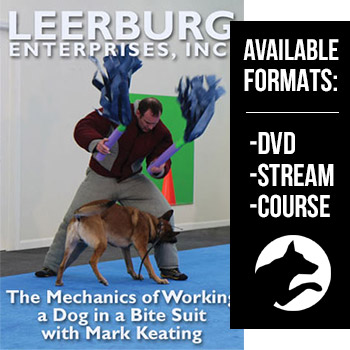
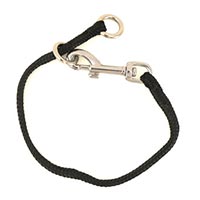
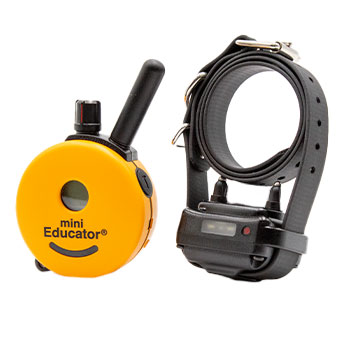
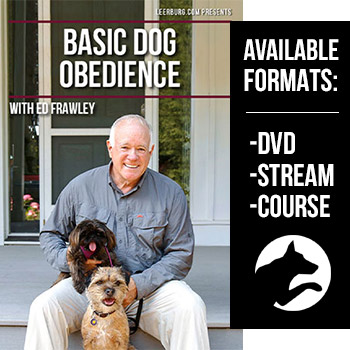
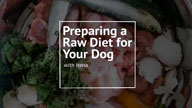
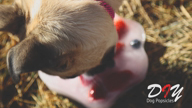
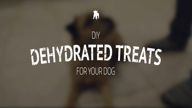
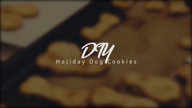
Ask Cindy.